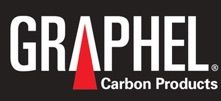Tooling Types – Milling Basics
Different Types of Milling
There are many different types of tooling, the most common being work holding tools. Work holding tools include jigs and fixtures; cutting tools for milling and grinding machines; dies for cold forming, forging and extrusion machines; and welding and inspection fixtures. In this month’s blog, we are going to look at the basics of milling.
Milling is the machining process of using rotary cutters to remove material from a workpiece by advancing the cutter into the workpiece at a certain direction. The cutter may also be held at an angle relative to the axis of the tool. Milling covers a wide variety of different operations and machines and is one of the most commonly used processes for machining custom parts to precise tolerances.
Milling is a cutting process that uses a milling cutter to remove material from the surface of a workpiece. The milling cutter is a rotary cutting tool, often with multiple cutting points. The cutter in milling is usually moved perpendicular to its axis so that cutting occurs on the circumference of the cutter. As the milling begins, the cutting edges of the tool repeatedly cut into and exit from the material, shaving off chips from the workpiece with each pass. The cutting action is shear deformation; material is pushed off the workpiece in tiny clumps that hang together to a greater or lesser extent to form chips. This makes metal cutting somewhat different from slicing softer materials with a blade.
The milling process removes material by performing many separate, small cuts. This is accomplished by using a cutter with many teeth, spinning the cutter at high speed, or advancing the material through the cutter slowly; most often it is some combination of these three approaches.
There are two major classes of milling process:
-
- Face Milling
In face milling, the cutting action occurs primarily at the end corners of the milling cutter. Face milling is used to cut flat surfaces (faces) into the workpiece, or to cut flat-bottomed cavities.
-
- Peripheral Milling
In peripheral milling, the cutting action occurs primarily along the circumference of the cutter, so that the cross section of the milled surface ends up receiving the shape of the cutter. In this case the blades of the cutter can be seen as scooping out material from the work piece. Peripheral milling is well suited to the cutting of deep slots, threads, and gear teeth.
Many of Graphel Carbon Products’ customers find milling graphite to be very messy and damaging to their equipment. Hence, as our milling supervisor, Jim Hoskins states, “We machine graphite, so you don’t have to.”
